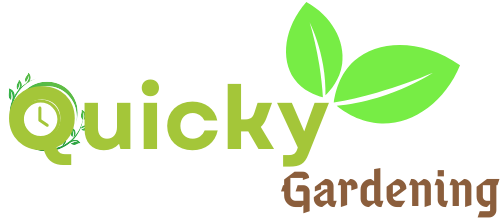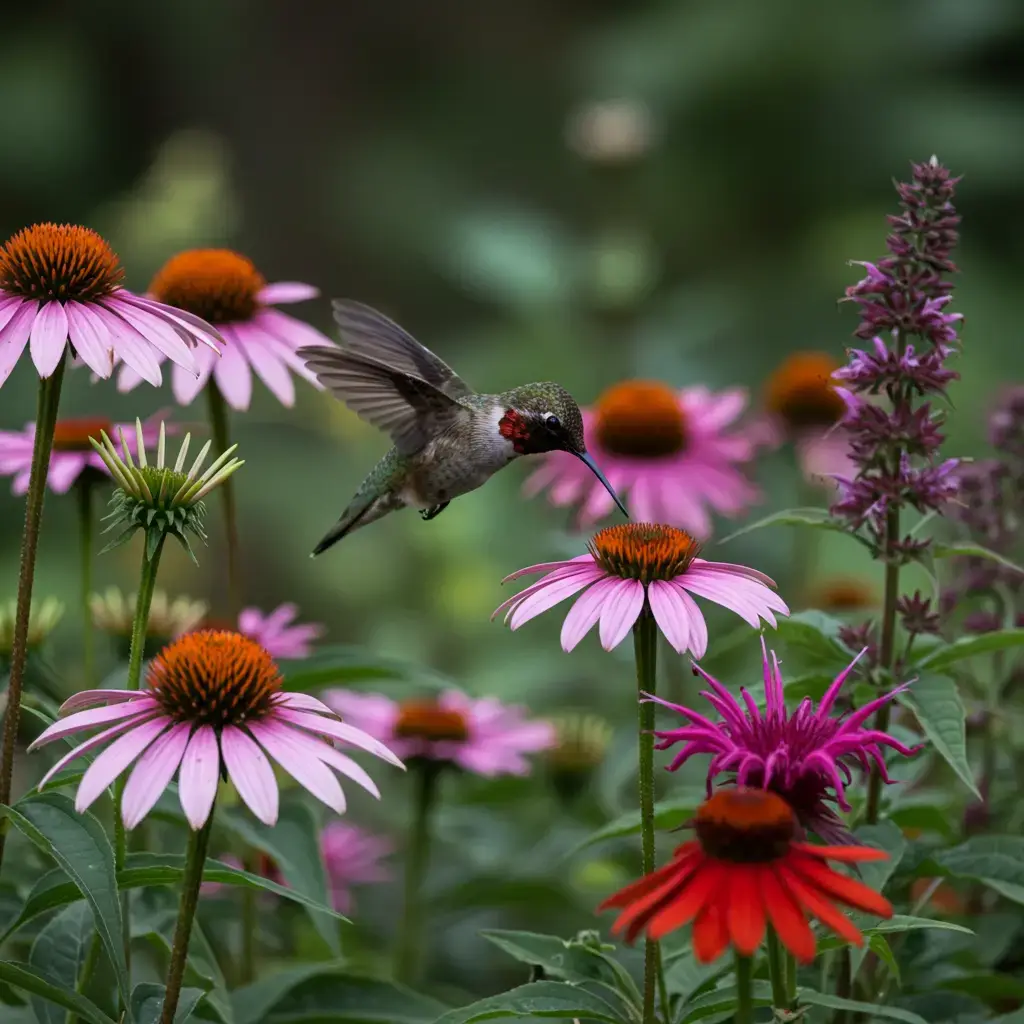Looking to transform your garden into a hummingbird haven? Hummingbird flowers perennials are the perfect solution for creating a sustainable, low-maintenance paradise that these enchanting birds will visit year after year. Unlike annuals, these perennial powerhouses return season after season, establishing deeper root systems and rewarding you with more abundant blooms as they mature. Did you know that hummingbirds can visit up to 2,000 flowers in a single day? These tiny dynamos with wings that beat 50-80 times per second are constantly searching for high-energy nectar sources found in the best perennial flowers for hummingbirds to fuel their incredible metabolism.
Creating a garden filled with easy-to-grow hummingbird perennials isn’t just a joy for bird watchers—it’s providing crucial habitat for these remarkable creatures while adding vibrant color and movement to your landscape. These reliable hummingbird flowers perennials require less maintenance than their annual counterparts, making them not only economical but also environmentally friendly choices.
In this comprehensive guide, we’ll explore the most effective hummingbird flowers perennials, how to select and grow them successfully, and how to create a complete habitat that will keep these iridescent visitors returning to your garden year after year.
Understanding Hummingbird Preferences
Hummingbirds have evolved alongside flowers in a beautiful example of co-evolution. Their long, thin bills and specialized tongues are perfectly adapted for reaching deep into tubular flowers to extract nectar. But what exactly makes hummingbird flowers perennials irresistible to these tiny aerial acrobats?
Color Attraction in Hummingbird Flowers Perennials
Hummingbirds are primarily attracted to bright colors, especially red, orange, and pink. Unlike bees, hummingbirds have excellent color vision but a poor sense of smell. The vibrant colors of the best perennial flowers for hummingbirds serve as beacons, signaling a potential nectar source from a distance.
Flower Shape Matters for Hummingbird Perennials
Tubular or trumpet-shaped flowers are hummingbird favorites, as their long bills fit perfectly into these flower forms. Easy-to-grow hummingbird perennials with narrow, deep tubes often contain higher nectar concentrations and help exclude competing insects.
Nectar Production in Hummingbird Flowers Perennials
Hummingbirds require high-energy food sources to fuel their rapid metabolism. They prefer flowers that produce abundant, sugar-rich nectar. The best perennial flowers for hummingbirds produce nectar with approximately 20-25% sugar content.
Pesticide-Free Environment for Hummingbird Perennials
Pesticides not only kill the small insects that hummingbirds sometimes eat for protein but can also contaminate nectar sources. Maintaining an organic garden with healthy hummingbird flowers perennials is critical for hummingbird health and survival.
Water Source Importance
Though hummingbirds get much of their hydration from the nectar of hummingbird flowers perennials, they still need water for bathing and drinking. Moving water, like a gentle mister or bubbling fountain, is particularly attractive to these birds.
Top Hummingbird Flowers Perennials
Spring Blooming Hummingbird Perennials
1. Columbine (Aquilegia spp.)
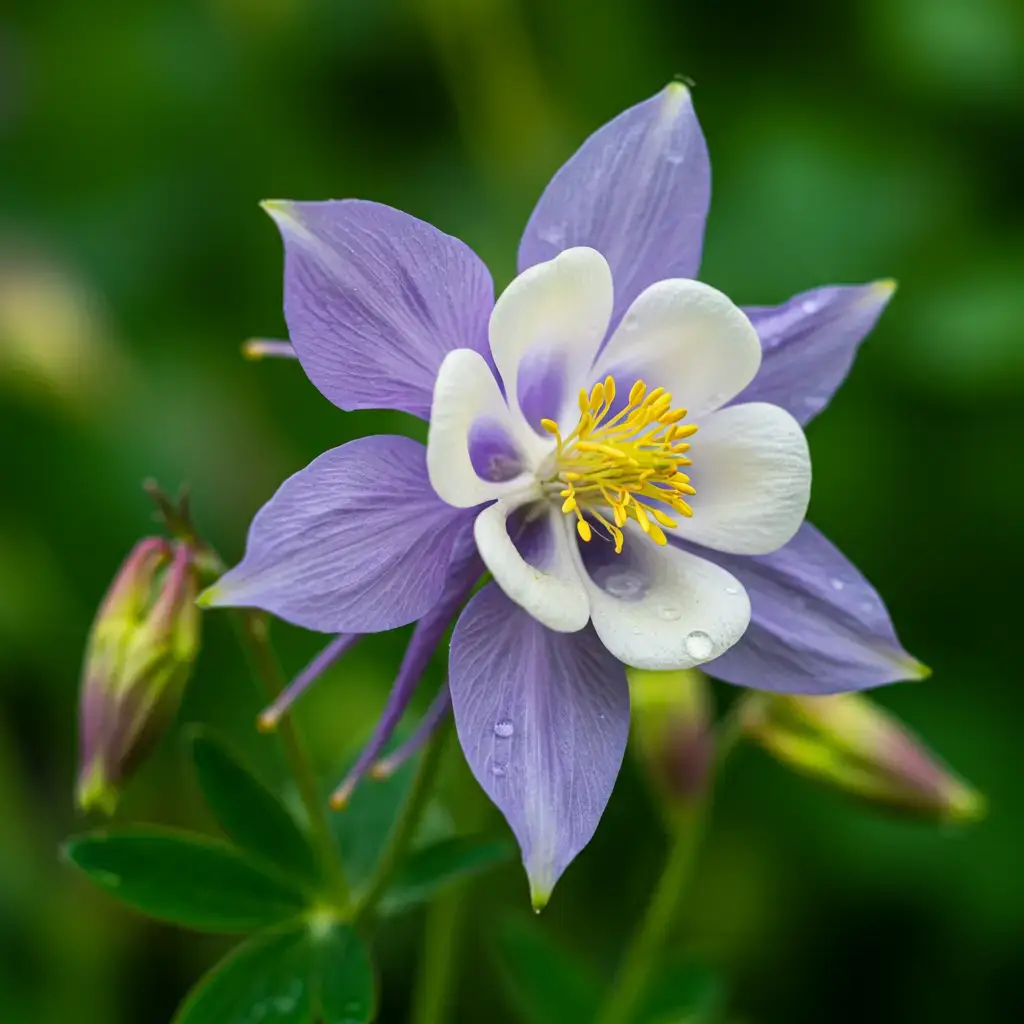
Botanical Name: Aquilegia canadensis, A. formosa, and other species
Description: Delicate, nodding flowers with distinctive spurred petals in red, pink, yellow, purple, or bicolor combinations.
Bloom Time: Mid-spring to early summer
Hardiness Zone: Zones 3-9
Sun/Shade: Partial shade to full sun
Soil Requirements: Moist, well-drained soil rich in organic matter
Water Requirements: Medium; consistent moisture, especially in hot weather
Maintenance Tips: Deadhead to prevent self-seeding if you don’t want volunteers; cut back foliage after flowering if it becomes unsightly
Hummingbird Attraction: The nectar-rich spurs are perfectly shaped for hummingbird bills, making this one of the easy-to-grow hummingbird perennials, and native red varieties are especially attractive
Companion Plants: Bleeding heart, coral bells, ferns
Potential Problems: Leaf miners can affect foliage; susceptible to powdery mildew in humid conditions
2. Coral Bells (Heuchera sanguinea)
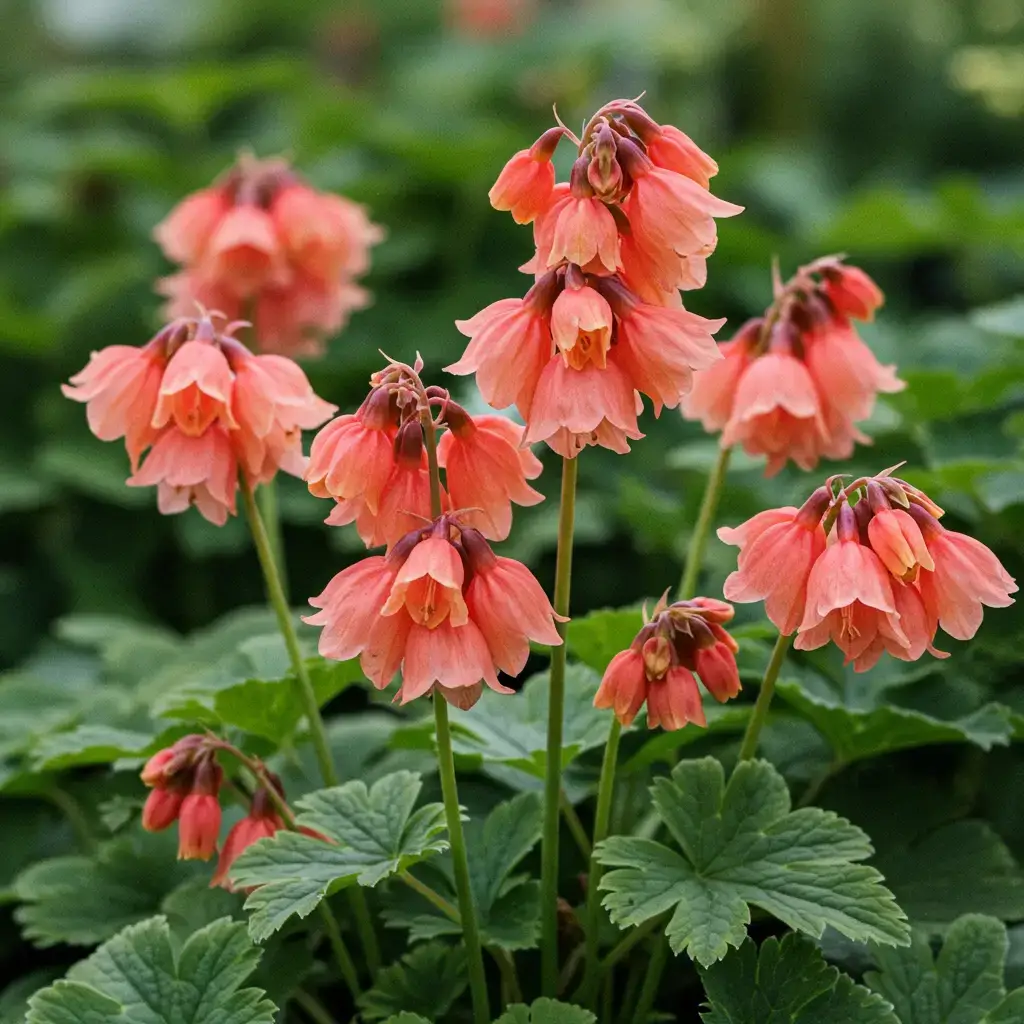
Botanical Name: Heuchera sanguinea
Description: Airy sprays of small, bell-shaped flowers on tall stems above decorative foliage
Bloom Time: Late spring to early summer
Hardiness Zone: Zones 4-9
Sun/Shade: Partial shade; morning sun with afternoon shade ideal
Soil Requirements: Well-drained, slightly acidic soil
Water Requirements: Medium; keep soil consistently moist but not soggy
Maintenance Tips: Division every 3-4 years helps maintain vigor; remove spent flower stalks
Hummingbird Attraction: The tiny tubular flowers contain sweet nectar and the traditional coral-red color is a hummingbird magnet, making this one of the reliable hummingbird flowers perennials
Companion Plants: Hostas, ferns, astilbe
Potential Problems: Crown rot can occur in poorly drained soils; heuchera rust may affect leaves
Summer Blooming Hummingbird Flowers Perennials
3. Bee Balm (Monarda didyma)
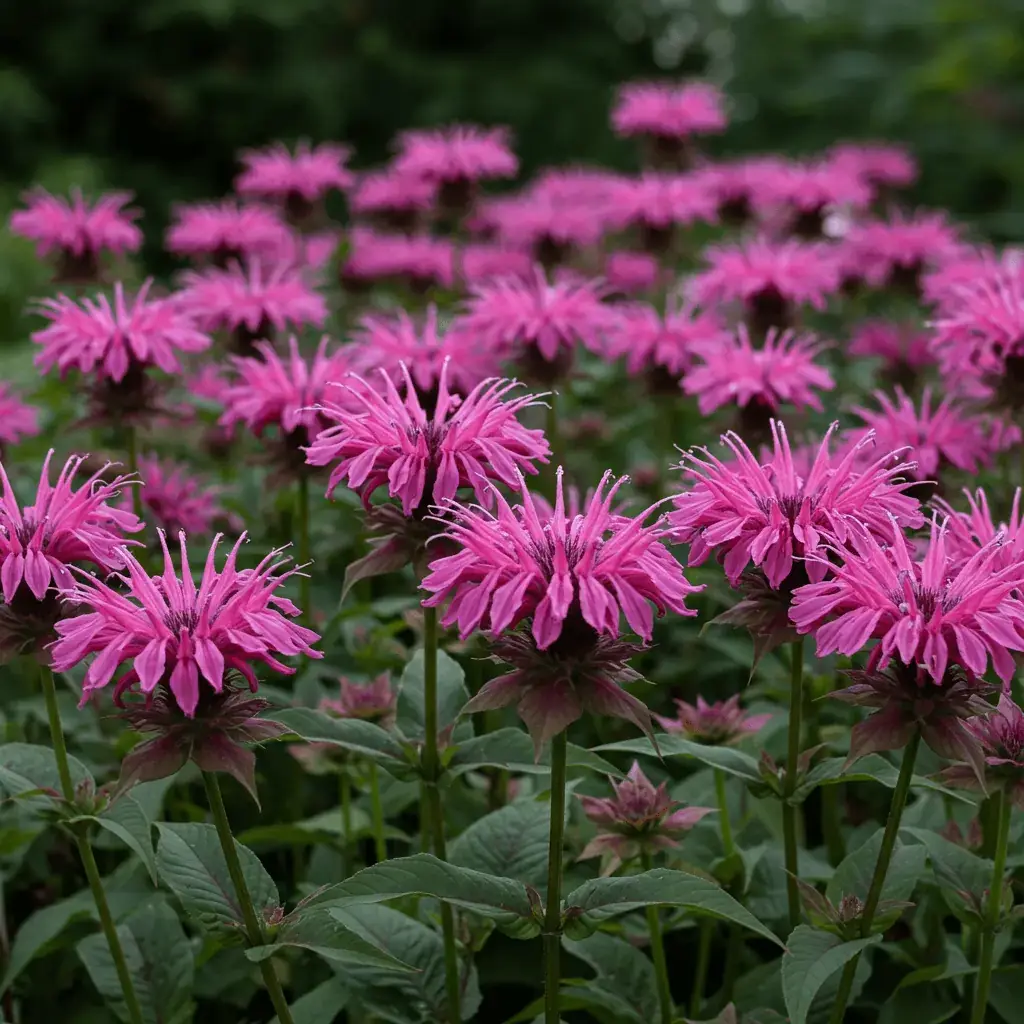
Botanical Name: Monarda didyma
Description: Showy whorls of tubular flowers in red, pink, or purple atop aromatic foliage
Bloom Time: Summer (June-August)
Hardiness Zone: Zones 4-9
Sun/Shade: Full sun to partial shade
Soil Requirements: Rich, moist soil with good drainage
Water Requirements: Medium to high; drought-tolerant once established but prefers consistent moisture
Maintenance Tips: Divide every 2-3 years to prevent center die-out; cut back after flowering
Hummingbird Attraction: One of the most reliable hummingbird flowers perennials with abundant nectar and perfect flower shape Companion Plants: Coneflower, black-eyed Susan, garden phlox
Potential Problems: Susceptible to powdery mildew; select resistant varieties for humid areas
4. Cardinal Flower (Lobelia cardinalis)
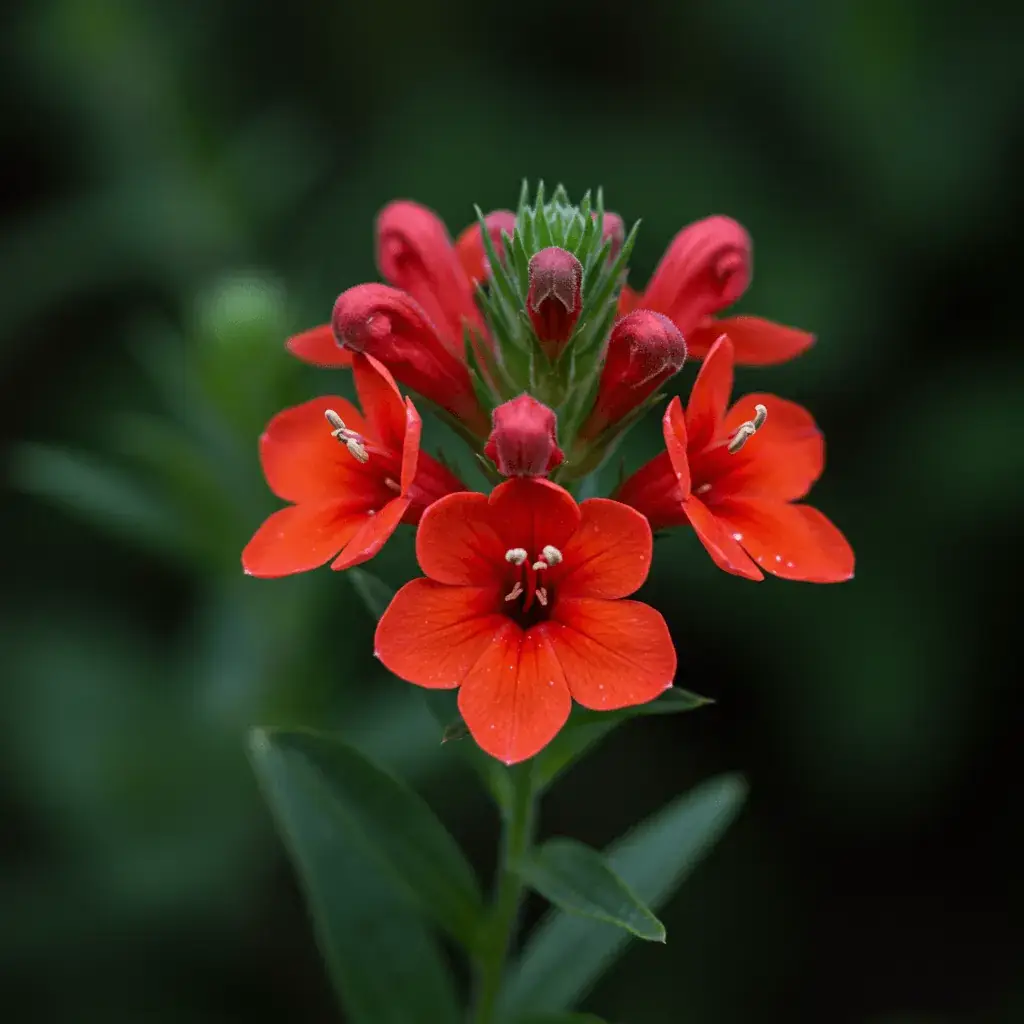
Botanical Name: Lobelia cardinalis
Description: Tall spikes of brilliant scarlet flowers
Bloom Time: Mid to late summer
Hardiness Zone: Zones 3-9
Sun/Shade: Partial shade to full sun if kept moist
Soil Requirements: Rich, moist to wet soil
Water Requirements: High; needs consistently moist soil
Maintenance Tips: May need staking in windy sites; can be short-lived but self-seeds
Hummingbird Attraction: Possibly the most attractive native hummingbird flowers perennials with intense red color and abundant nectar
Companion Plants: Blue lobelia, iris, astilbe
Potential Problems: Susceptible to drought stress; rabbit damage can occur
5. Penstemon (Penstemon spp.)
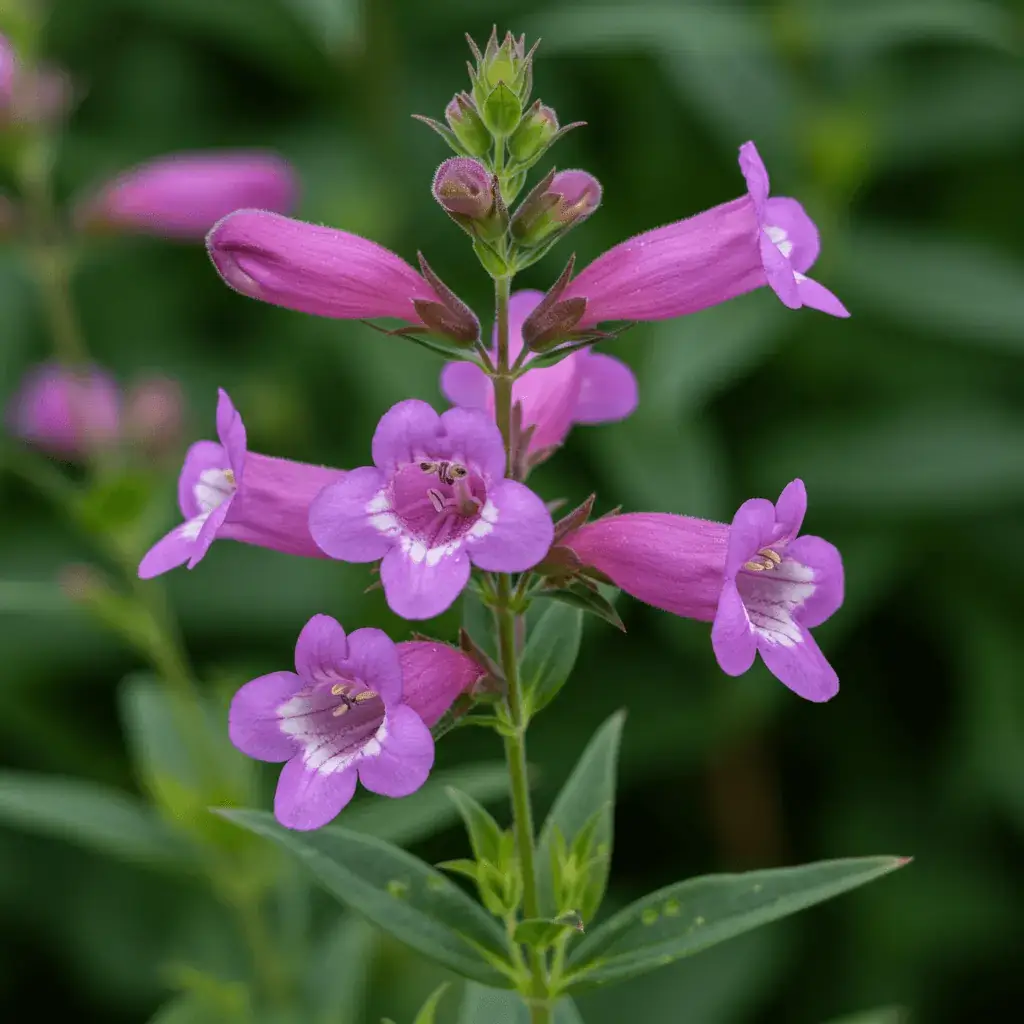
Botanical Name: Multiple species including P. digitalis, P. barbatus
Description: Spikes of tubular flowers in various colors depending on species
Bloom Time: Late spring through summer
Hardiness Zone: Varies by species, generally Zones 3-9
Sun/Shade: Full sun
Soil Requirements: Well-drained, lean soil; avoid rich, heavy soils
Water Requirements: Low to medium; drought-tolerant once established
Maintenance Tips: Cut back after flowering; may need winter protection in cold regions
Hummingbird Attraction: Tubular flowers are perfectly suited to hummingbird bills, especially red varieties like P. barbatus, making these easy-to-grow hummingbird perennials
Companion Plants: Salvia, yarrow, ornamental grasses
Potential Problems: Root rot in poorly drained soils; susceptible to foliar fungal diseases in humid conditions
6. Salvia (Salvia spp.)
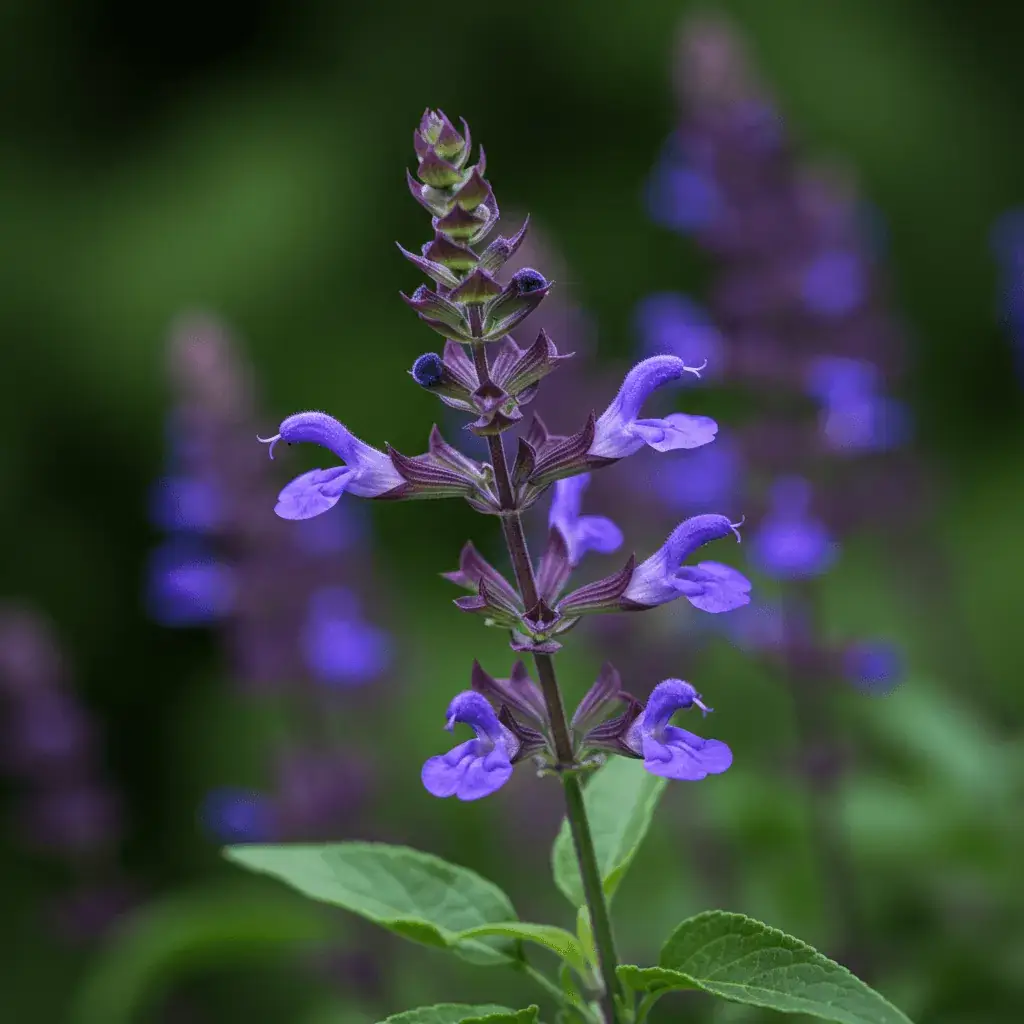
Botanical Name: Many species including S. greggii, S. guaranitica
Description: Spikes of tubular flowers in red, purple, blue, and pink
Bloom Time: Summer to fall Hardiness Zone: Varies by species; generally Zones 5-9
Sun/Shade: Full sun
Soil Requirements: Well-drained soil; tolerates poor soil
Water Requirements: Low to medium; drought-tolerant once established
Maintenance Tips: Prune back by 1/3 after first flush of bloom to encourage rebloom
Hummingbird Attraction: The tubular flowers contain abundant nectar, making these some of the best perennial flowers for hummingbirds, and red varieties are especially attractive
Companion Plants: Catmint, lavender, coreopsis
Potential Problems: Root rot in wet soils; leaf hoppers may be an issue in some regions
Read More :
Fall Blooming Hummingbird Flowers Perennials
7. Hardy Fuchsia (Fuchsia magellanica)
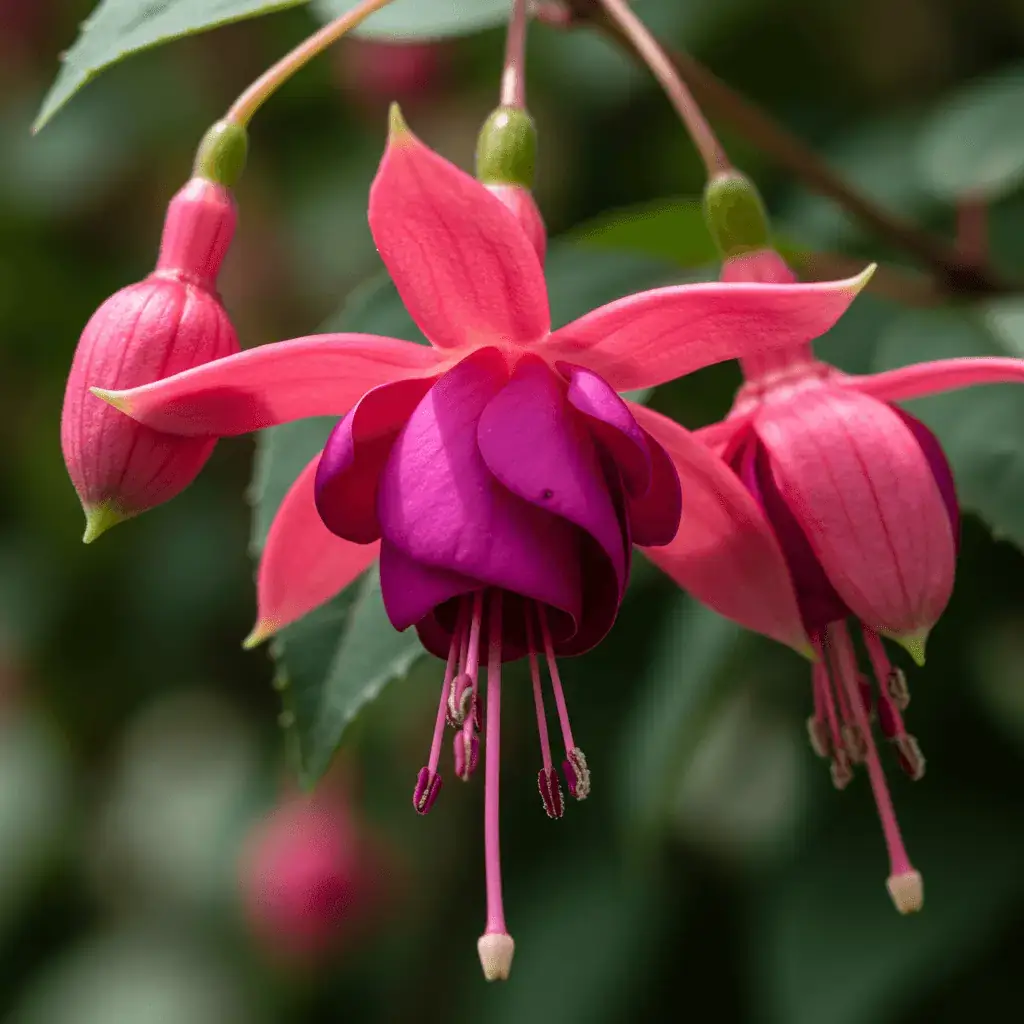
Botanical Name: Fuchsia magellanica and hardy cultivars
Description: Pendulous, trumpet-shaped flowers in red and purple combinations
Bloom Time: Summer through fall until frost
Hardiness Zone: Zones 6-9 (some varieties to Zone 5)
Sun/Shade: Partial shade; morning sun with afternoon shade ideal
Soil Requirements: Rich, moist, well-drained soil
Water Requirements: Medium to high; needs consistent moisture
Maintenance Tips: Prune in early spring; may die back to ground in colder zones but regrow from roots
Hummingbird Attraction: The hanging tubular flowers are perfectly shaped for hummingbirds, which can hover below them while feeding, making this one of the spectacular hummingbird flowers perennials
Companion Plants: Hostas, astilbe, bleeding heart
Potential Problems: Fuchsia gall mite can be an issue in some regions; protect from harsh winds
Creating a Hummingbird-Friendly Perennial Garden
Planning Your Hummingbird Flowers Perennials Garden
Creating a successful hummingbird garden requires thoughtful planning. Consider your garden’s microclimates and choose locations where hummingbird flowers perennials will thrive. Aim for continuous bloom from spring through fall by selecting early, mid-season, and late-blooming perennials.
Group plants with similar light, soil, and water requirements together to simplify maintenance. Create planting beds with curves rather than straight lines, which provides more edge space for hummingbird flowers perennials and better visibility for monitoring hummingbird activity.
Soil Preparation for Hummingbird Perennials
Most hummingbird-friendly perennials thrive in well-prepared soil. Start by removing weeds and grass from your planting area. Add 2-3 inches of compost to improve soil structure, fertility, and drainage. For clay soils, consider adding additional organic matter to improve drainage for your hummingbird flowers perennials.
Test your soil pH and amend as needed—most perennials prefer slightly acidic to neutral soil (pH 6.0-7.0). Work amendments into the top 8-12 inches of soil before planting your easy-to-grow hummingbird perennials.
Planting Techniques for Hummingbird Flowers Perennials
The best time to plant hummingbird flowers perennials is typically spring or fall when temperatures are moderate and rainfall is more reliable. Space plants according to their mature size to ensure good air circulation and room to grow.
When planting, dig holes twice as wide as the root ball but only as deep. Position plants at the same depth they were growing in their containers. Water thoroughly after planting and apply a 2-3 inch layer of mulch to conserve moisture and suppress weeds around your hummingbird flowers perennials.
Maintenance Schedule for Hummingbird Perennials
Spring:
- Cut back dead foliage from previous year
- Divide overcrowded hummingbird flowers perennials
- Apply light organic fertilizer
- Mulch beds to suppress weeds
Summer:
- Deadhead spent blooms to encourage rebloom
- Water deeply during dry periods
- Monitor for pests and diseases
- Stake tall hummingbird flowers perennials if needed
Fall:
- Cut back spent perennials after frost
- Plant new hummingbird flowers perennials before first freeze
- Apply mulch for winter protection in cold regions
Winter:
- Plan garden expansions for spring
- Order seeds or plants for next season
- Research new hummingbird flowers perennials to try
Beyond Flowers: Supporting Hummingbirds in Your Garden
Water Source
Hummingbirds appreciate water features that provide gentle movement near their favorite hummingbird flowers perennials. Consider installing:
- Misters that create a fine spray
- Shallow bird baths with bubbling features
- Drip irrigation systems that create droplets on leaves
A water source becomes especially important during dry periods when natural water may be scarce.
Shelter Near Hummingbird Flowers Perennials
Hummingbirds need places to perch, rest, and survey their territory. Include small trees and shrubs around the perimeter of your garden of hummingbird flowers perennials. Native deciduous trees like dogwoods or redbud provide both perching spots and early spring flowers.
Leave some small branches exposed rather than pruning everything away. These serve as perfect perches for hummingbirds to rest and watch for insects.
Nesting Sites
Female hummingbirds build tiny, walnut-sized nests using plant down, spider silk, and lichen. Support nesting by:
- Leaving shrubs with horizontal branches near hummingbird flowers perennials for nest building
- Growing plants with soft, fuzzy leaves like lamb’s ear
- Avoiding disturbance to areas where hummingbirds might nest
- Leaving spider webs intact when possible
Avoid Pesticides Around Hummingbird Flowers Perennials
Maintain a chemical-free garden to protect both hummingbirds and their insect food sources. Hummingbirds supplement their nectar diet with small insects for protein.
Instead of chemical pesticides, use organic methods such as:
- Insecticidal soaps for severe infestations
- Companion planting to repel pests naturally
- Hand-picking larger pests
- Encouraging beneficial insects like ladybugs and lacewings
Regional Considerations for Hummingbird Perennials
Northeast
Native hummingbird flowers perennials like cardinal flower, eastern columbine, and bee balm thrive in the Northeast’s climate. Plant in protected areas to help tender perennials survive harsh winters.
Southeast
The long growing season supports many hummingbird flowers perennials. Try native species like trumpet honeysuckle, coral honeysuckle, and native azaleas that handle heat and humidity well.
Midwest
Prairie natives like liatris and bee balm are excellent hummingbird flowers perennials that handle temperature extremes. Choose varieties with good cold hardiness for reliable performance.
Southwest
Drought-tolerant hummingbird flowers perennials like penstemon, hummingbird mint, and desert willow are ideal. Focus on native species adapted to arid conditions and intense sun.
Pacific Northwest
The mild, moist climate supports many hummingbird flowers perennials. Try hardy fuchsias, crocosmia, and western columbine. Consider year-round options as Anna’s hummingbirds often overwinter in this region.
Common Questions (FAQ)
Q: When is the best time to plant perennials for hummingbirds? A: Spring and fall are ideal planting times. Fall-planted perennials establish root systems before winter, while spring planting allows time for establishment before summer heat.
Q: How can I attract hummingbirds to a small space like a balcony? A: Use containers filled with nectar-rich perennials like salvia and penstemon. Hang baskets with trailing fuchsia or verbena. Add a small water feature or mister.
Q: Do I need to deadhead hummingbird perennials? A: Deadheading most perennials encourages reblooming and extends the nectar season. However, some native species should be allowed to set seed to support self-seeding.
Q: Should I still put out hummingbird feeders if I have perennial flowers? A: Feeders can supplement natural nectar sources, especially during early spring and late fall when fewer flowers are blooming. Clean feeders regularly to prevent harmful mold growth.
Q: How do I keep my hummingbird perennials blooming all season? A: Select a variety of perennials with staggered bloom times. Deadhead regularly, provide adequate water, and give a light feeding with organic fertilizer mid-season.
Conclusion
Creating a garden filled with perennial flowers for hummingbirds is one of the most rewarding ways to connect with nature right in your own backyard. By selecting the best perennial flowers for hummingbirds and following the planting and maintenance guidelines outlined in this guide, you’ll create a sanctuary that benefits these amazing birds while providing you with years of enjoyment.
Remember that your garden becomes part of a larger habitat network that helps sustain hummingbird populations during breeding seasons and migrations. Each flower you plant makes a difference!
Share this article with fellow gardening enthusiasts to help create more hummingbird-friendly spaces. For more gardening tips and plant suggestions, sign up for our monthly newsletter featuring seasonal gardening advice and special offers on plants that support pollinators and birds.
